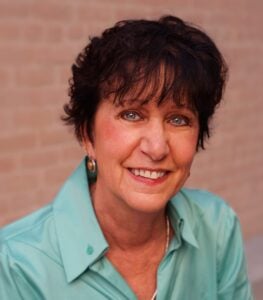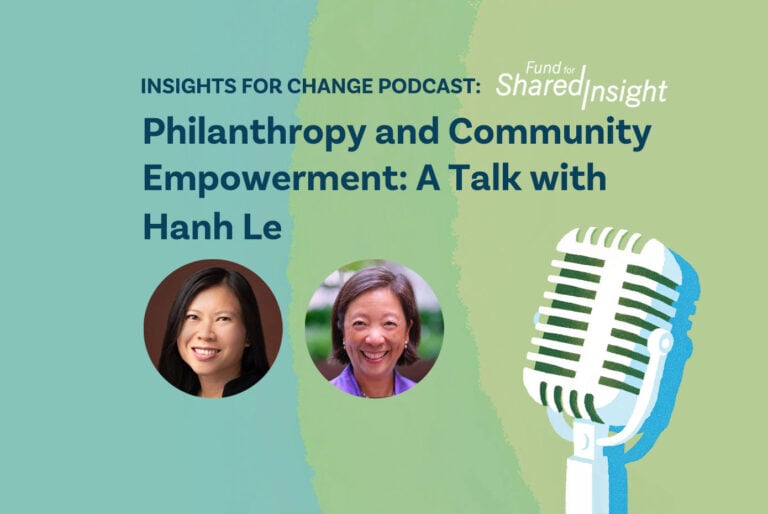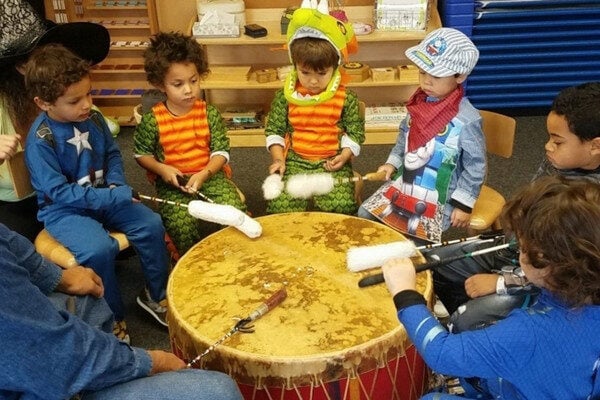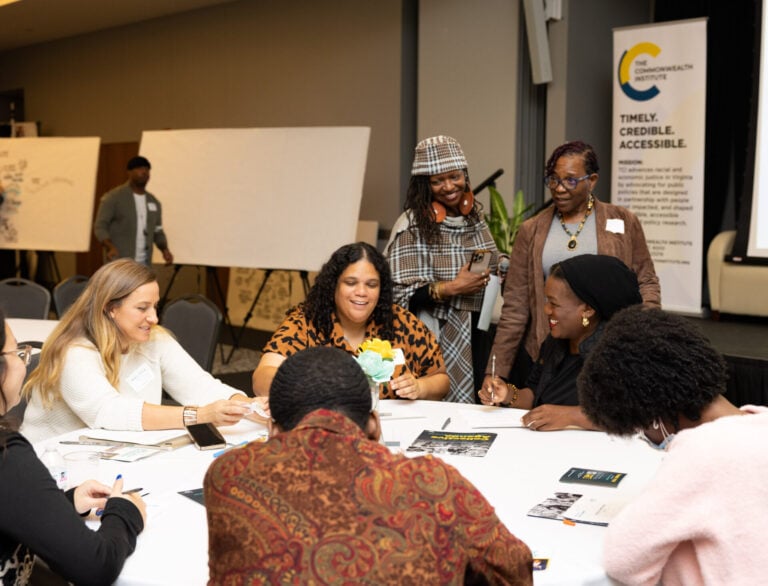Five years ago, during the early days of the pandemic, many foundations did something they don’t often do. They shifted their approaches to funding, changing processes and going beyond their 5% minimum payout, all to be responsive to what was needed during the crisis.
When the worst was over, though, philanthropy went back to business as usual, and very little has changed in the long run.
As we face the current mayhem coming out of Washington, foundations once again have the opportunity to reconsider how they do their work. What steps can they take that will not just provide emergency relief, but create more of a difference in the long term?
If we want to shift power dynamics; if we want trust-based, participatory approaches to become more of the norm; if we want to design funding strategies that actually create the change our communities are hoping for, that will not happen from an adjustment to a process here or there.
It will require a fundamental shift in what we pay attention to when we are listening to each other.
A framework for possibility
At the systems-change organization Creating the Future, our work is guided by the question-based Catalytic Thinking framework. The questions of Catalytic Thinking lead to more inclusive, strength-based, and possibility-focused approaches to the work of social change:
- Who will be affected by what we are considering? What would it take for them to lead or make decisions about the direction we take?
- For all those people who will be affected, what do they aspire to? What strengths do they have to build upon? What are their core values?
- What is the best possible result of our actions? What conditions need to be in place for that high potential outcome to be reality?
- What strengths do we have to build upon, to create those conditions?
Rooted in brain science, the framework relies upon these kinds of questions as the key to refocusing our attention. When foundations are communicating with grantees and community members, are we paying attention to people’s problems, or their potential? Are we focusing on people’s weaknesses and needs, or on their strengths and their values?
The more we focus on what is possible and strong in people, the better chance we have to transform our relationships and our communities. And that all starts with what we are listening for.
The problem with what we typically listen for
In social change work, problems are our business. Consider where most grant applications begin. “What is the problem, and how will you solve it?” could just be the theme song of the entire nonprofit world.
Given how our brains process information, this is not surprising. Our brains are structured to focus first on survival, and only then on anything else. The more overwhelmed and helpless we feel to fix what’s wrong, the more our brains double down on that problem-focus.
By shifting our attention from what is wrong to what is possible, we can migrate our thinking out of that reactive brain space, to the area of the brain that is designed for reason and creativity. The energy in the conversation shifts. We are better able to connect with the strengths our community members bring to the conversation, leading to changes in the power dynamics between funders, grantees, and community members. And we can see our problems within the more holistic context of our potential. 1
Listening for what is possible, even in the middle of a crisis
Changing how we think about situations changes the actions we take. Whether we listen for problems or aspirations, weaknesses or strengths, conflicts or values – that will affect the direction we take.
Our focus will shift when we ask less about people’s problems, and ask more questions like:
- What do you want life to be like after the problem is gone?
- When we have successfully gotten past this crisis, what do you hope the community will be like?
- What would “healthy” look like?
- What would “equitable” look like?
- What would “humane and compassionate” look like?
At Creating the Future, we were starting a new demonstration project focused on organizational culture in a government department. During our first meeting, the department director shared a long list of the problems his team was experiencing.
So we set out to listen to the staff in as many formats as we could think of, including what the director called “Coffee with the Chief,” for folks who wanted to talk with him directly. Here is what we asked:
o What would a great culture look like?
o What would you experience when you came to work?
o What would it feel like?
In response, we received all sorts of ideas about making the culture more humane, more open, more trusting. What’s more, though, we also learned what wasn’t working, because even as a group is telling you what they aspire to, their very next words may well be, “and here’s why that is going to be hard.” We were able to see the whole context by asking what “good” would look like.
The same goes for paying attention to strengths. While nonprofits often focus on the strengths in their communities, doing asset maps and lifting up what is going well, both nonprofits and funders actually do a terrible job of focusing on the strengths of the nonprofits themselves. Especially during these current times, nonprofits are feeling more dependent, more uncertain, and less sustainable than ever.
By reformulating your questions, and refocusing your attention, foundations have the opportunity to focus nonprofit leaders and community members on their strengths, helping them step into their power to make the kind of difference they deserve.
A nonprofit CEO was at her wits end. “We have 12 board members,” she told me. “Most of them are really wonderful, but three of them are making life so difficult for all of us!”
Instead of asking what those three were doing wrong, I asked her to tell me about the good ones. “What are they like? How are they reacting to the other three? What is your relationship with them?” By the time she had told me about what was working, she could see her own path to success.
The more you can hold space for possibility …
The more you listen for people’s strengths and values …
The more you listen for aspirations …
The more you see “solving problems” as one among many steps towards visionary goals …
The more you will be providing what your community really needs at this time.
You will also be paving the way for what is possible when this crisis has passed – building the humane, equitable, resilient, healthy communities we all want.
About the author:

Hildy Gottlieb
Footnotes:
1 For a deeper explanation of the brain science of focusing on problems, see https://creatingthefuture.org/why-you-arent-thinking-clearly-the-brain-science-of-fear-in-uncertain-times-part-1/








